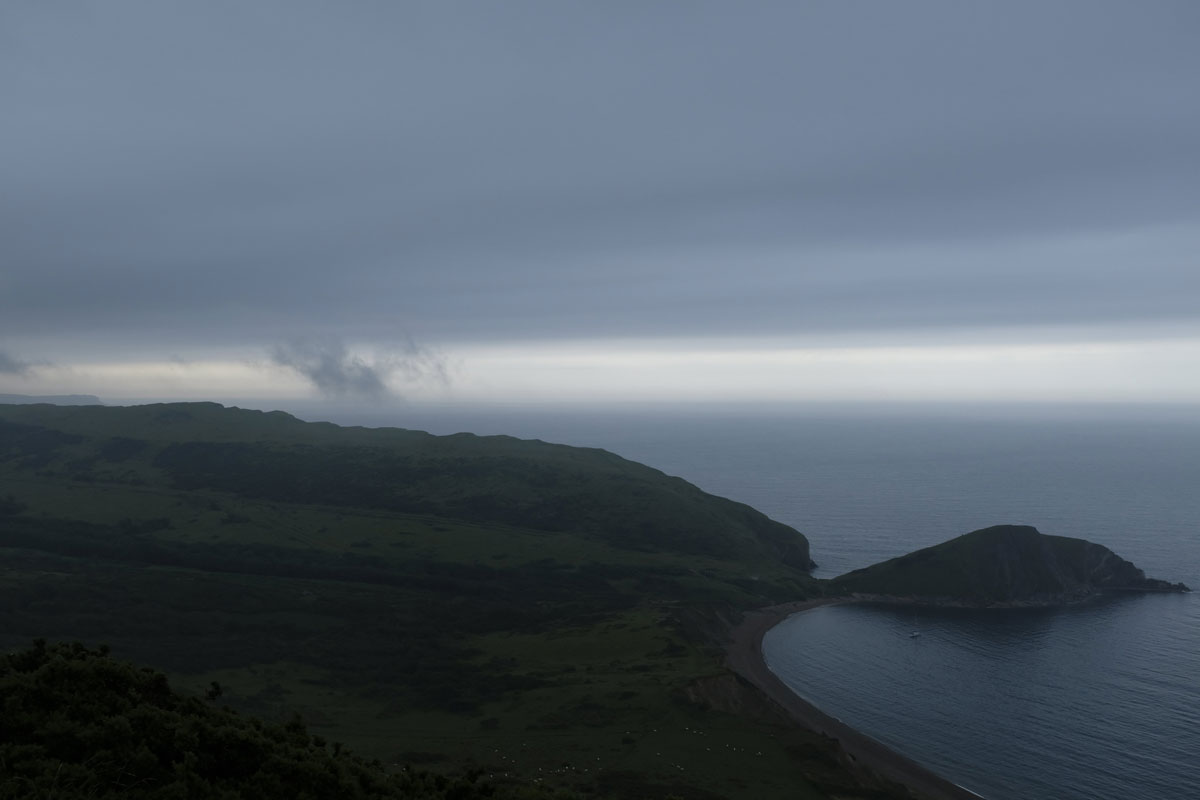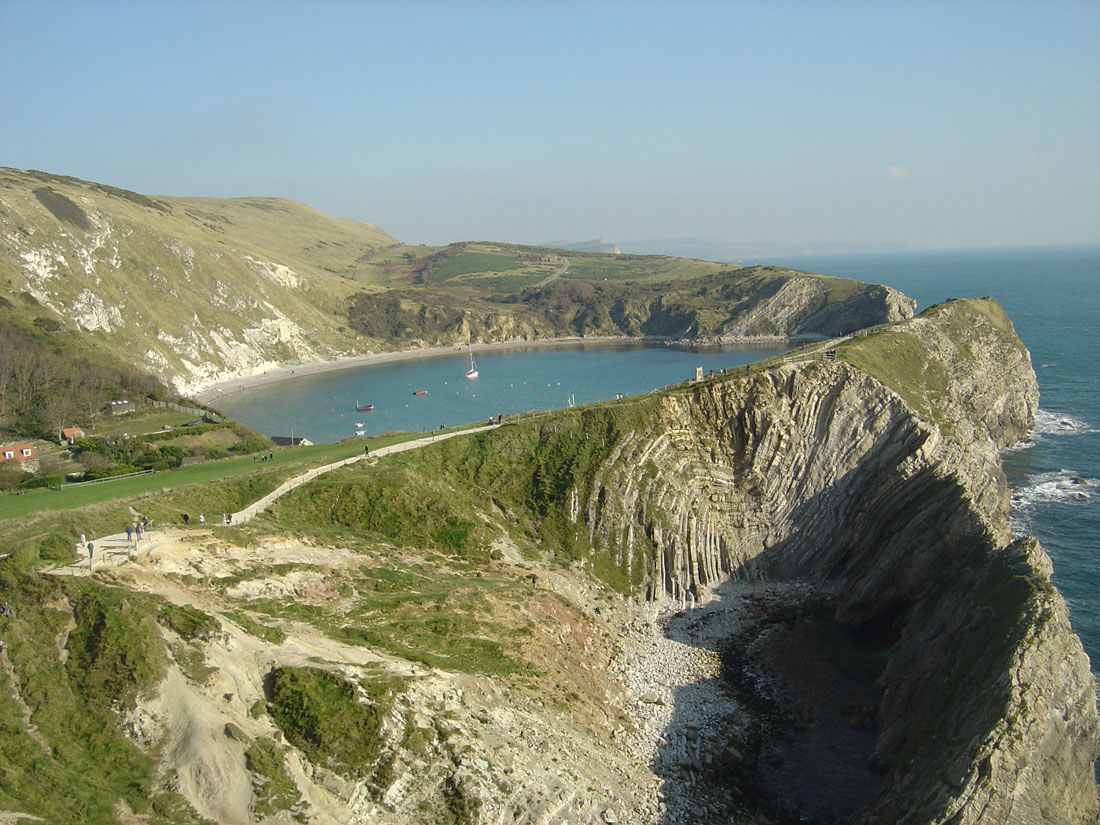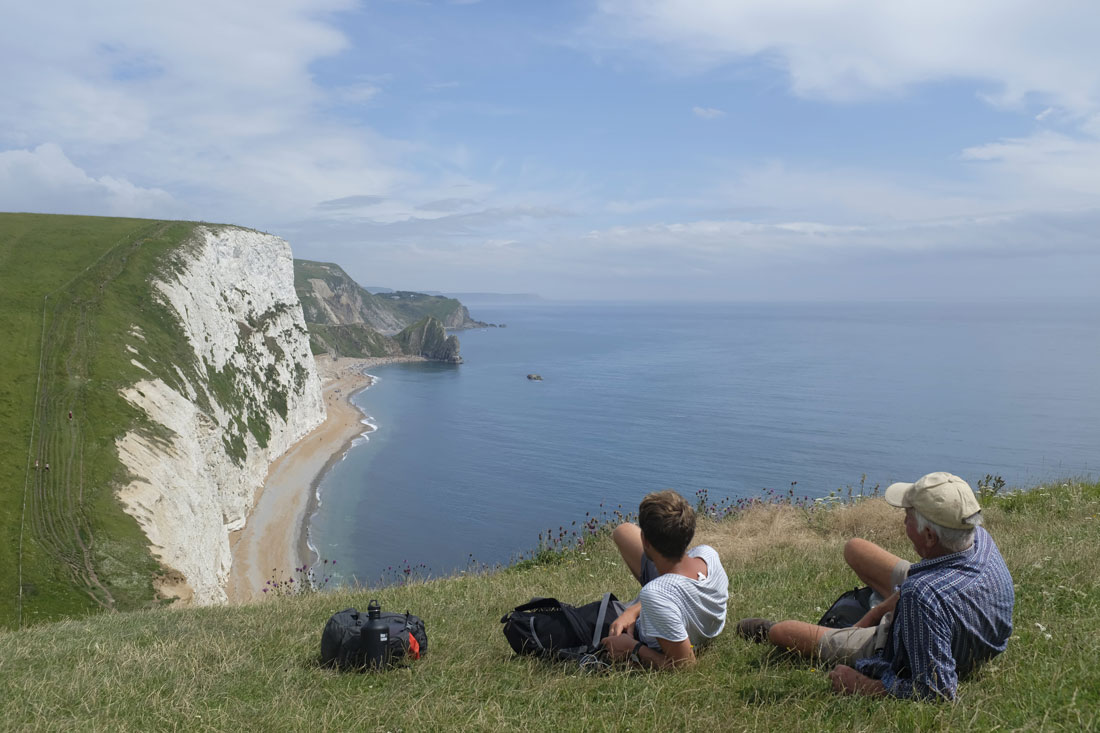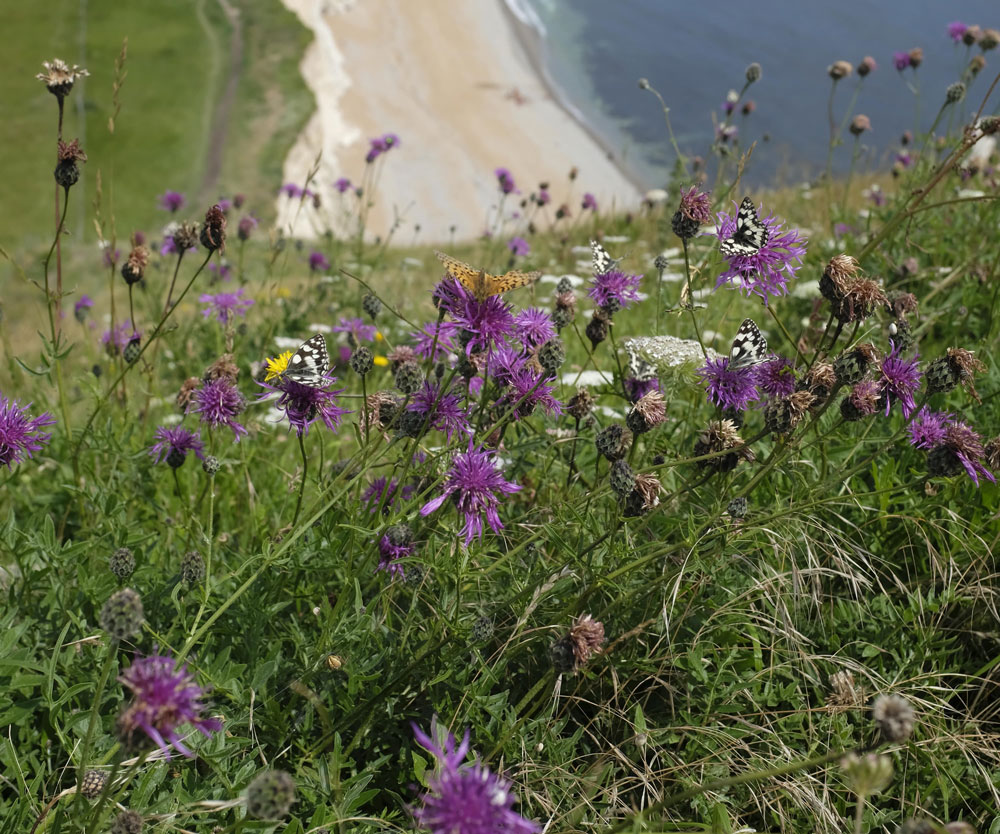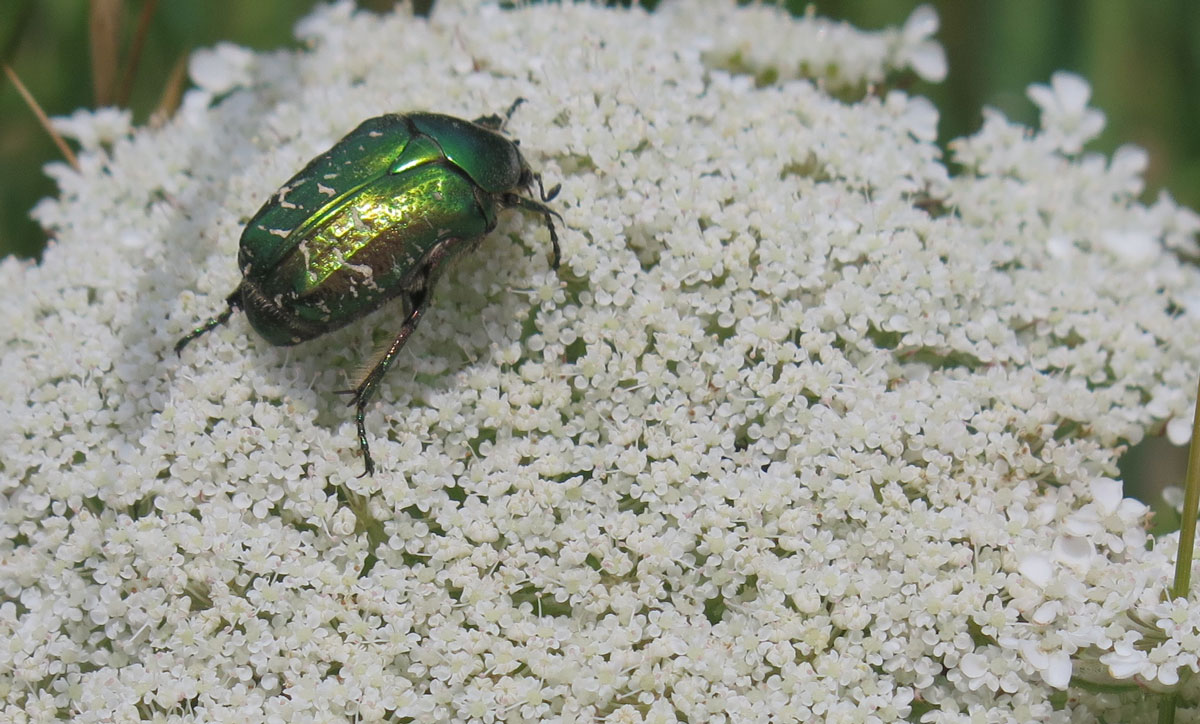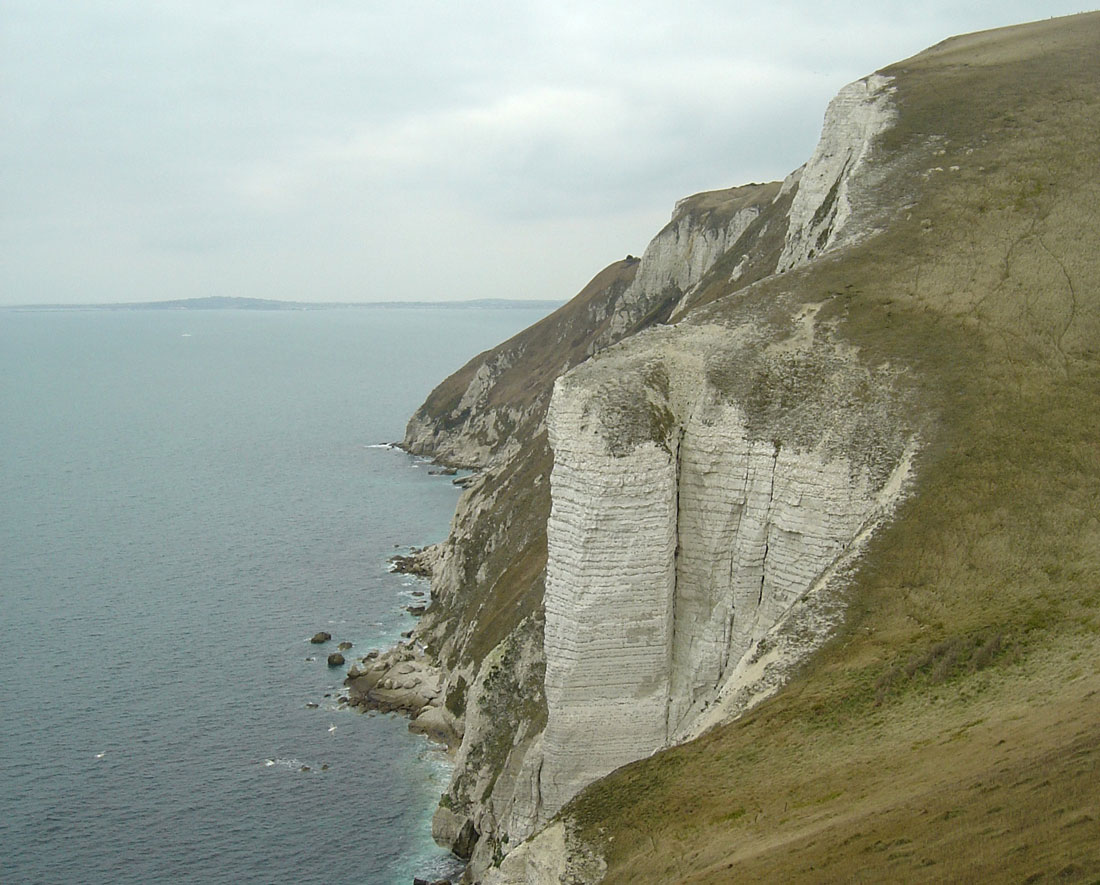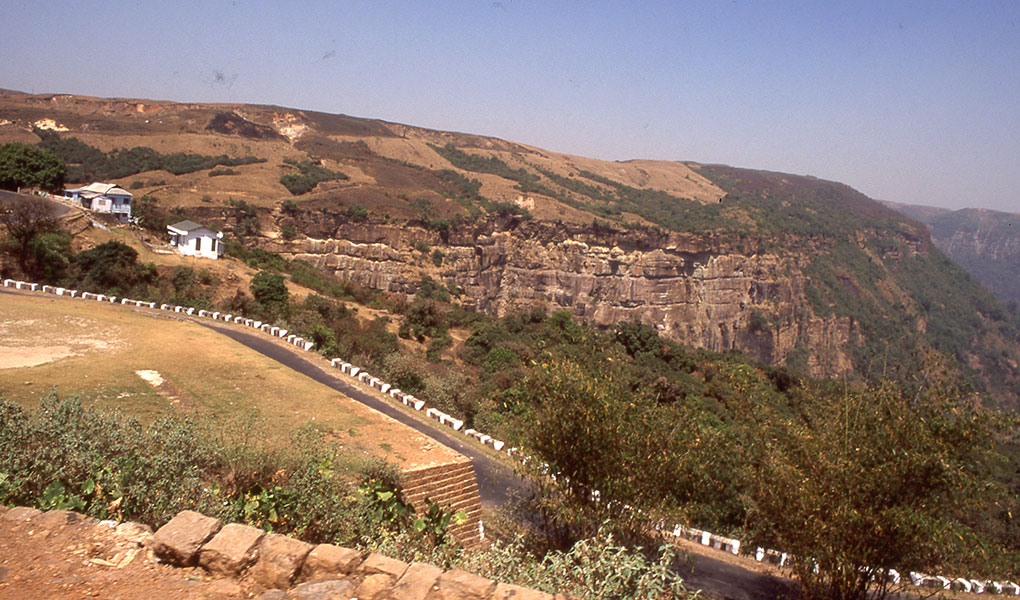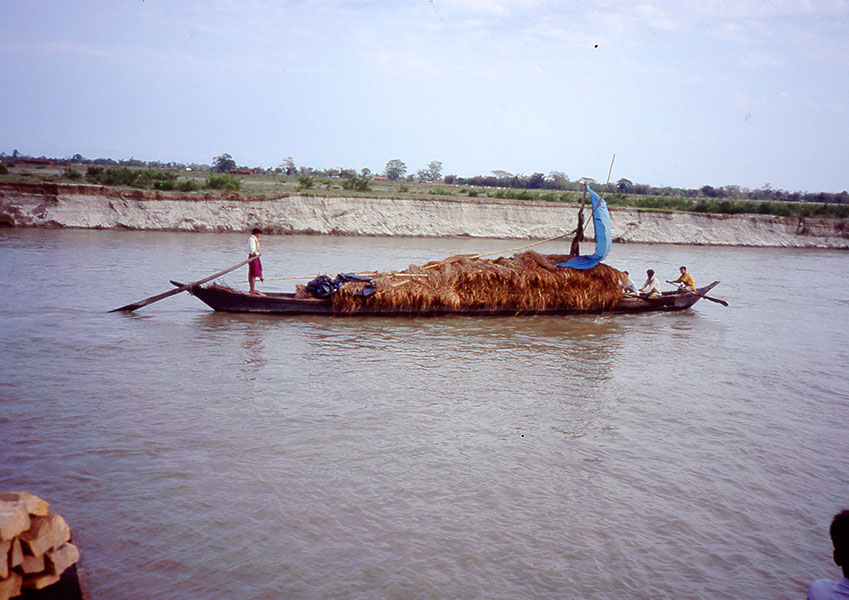52. The Weymouth Track Again
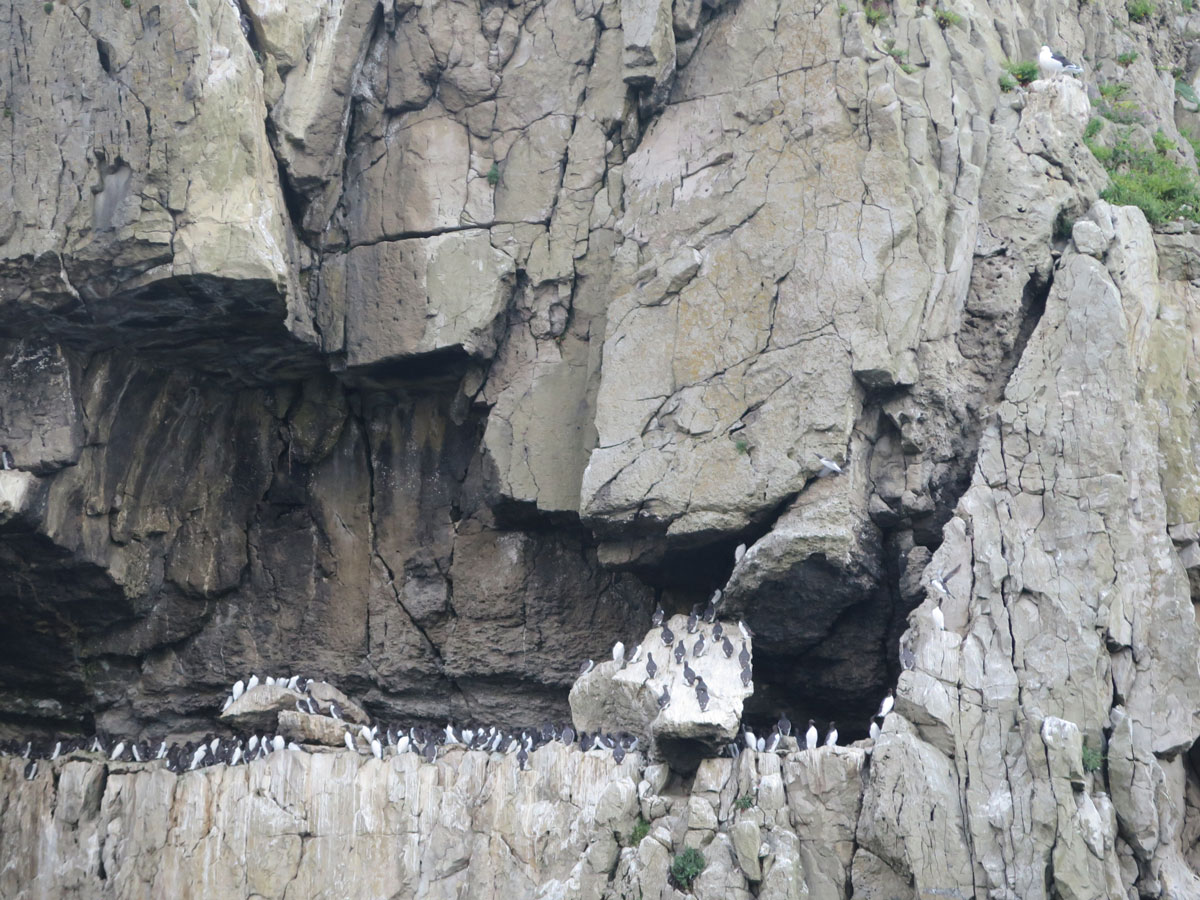
51. MidSummer
July 1, 2021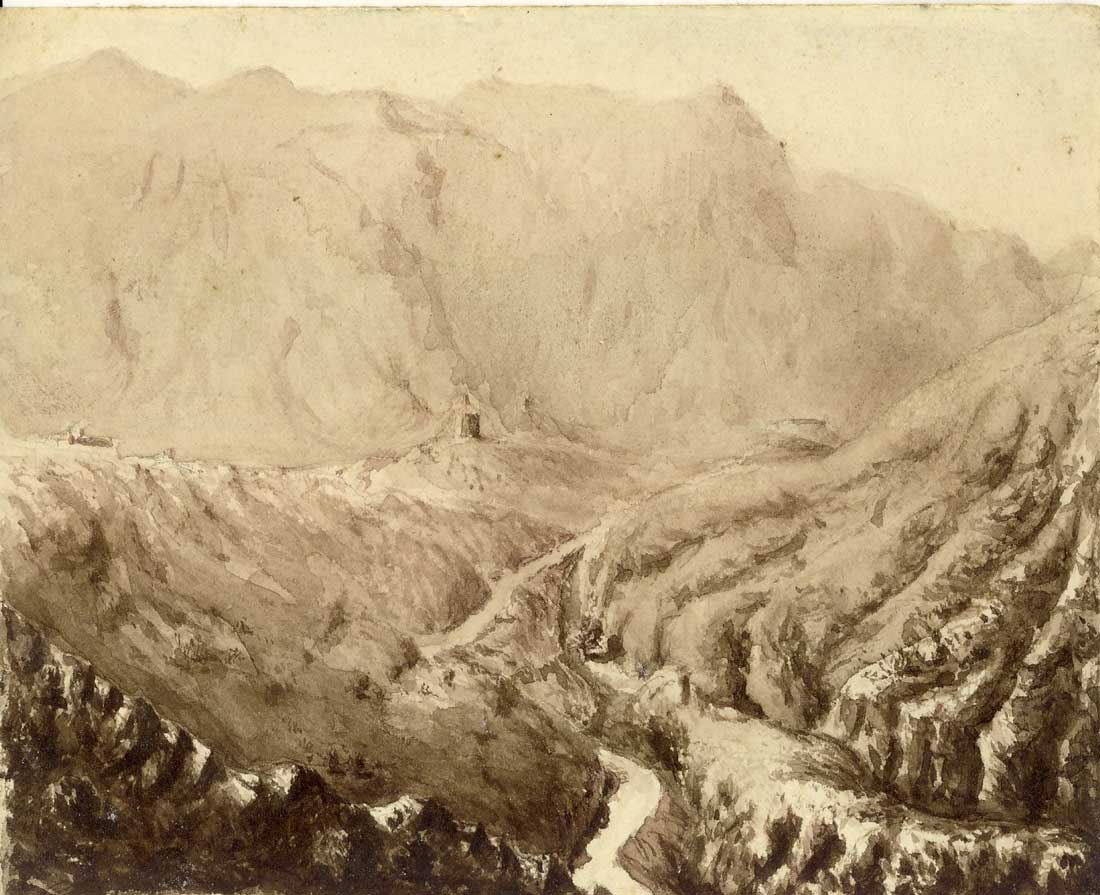
53. Talking Of Afghanistan
September 2, 2021T he trudge to Weymouth has become my annual discipline. In 2020, walking alone, it provided two blogs. This year Hugo was enthusiastic and reckoned a fellow architect, friend since college, might be up for it, too. It’s more fun in company and none of my contemporaries is foolish enough to embark on such challenges.
There are impediments. A large tract of coastal land cuts the route. Lent to the War Department in 1943 on the broken promise of return after the war, it remains a firing range, closed on weekdays. Not that firing worried us in boyhood, when it was always closed. After all, the government had happily thrown our fathers and grandfathers into far riskier firing lines. We roamed the forbidden red-flagged tract at will. I christened it ‘Red Cow Country’ from its ragged cattle.
We pick a Saturday. Weather is a perpetual hazard. A glorious, scarlet sunset on Friday evening precedes a night rich in thunder, lightning but less rain than predicted. The morning dawns grey, damp and doubtful. Both starting from different villages, Hugo texts to confirm they are heading for the rendez-vous, Kingston church, so I set off.
Deep grass in a flowery meadow soaks my footwear before even quitting Dunshay. Four russet roe deer prance away across the big field. It is grey, unpromising but still not raining when I reach the church. There, Hugo introduces Steph, who lives in the sort of glorified hut I aspire to. We have immediate common ground. A picture shows his place, shape-wise suggesting the tree-enclosed gingerbread cottage of a fairy-tale witch.
Soon we are heading westward along the ridge overlooking green pasture towards the sea. A threatening sky scatters occasional light libations; wafting mist, opening then closing, offers only brief glimpses of a handsome landscape from coastal farmland, along ragged undulating white and brown cliffs towards the highest headland of Whitenothe.
I am hard pressed to keep up, trailing at each ascent - an offence against a naturally competitive soul. The cloud lifts, briefly revealing Steeple church whose stone walls bear the arms of the Lawrence family, which embrace the stars and stripes of the Washington clan, the origin of Old Glory. A notice above Kimmeridge declares the range path closed. We ignore it. Another, near Steepleleaze, entrance to the firing area, repeats it. The gate is unlocked: they’ve neglected to change the sign after Friday’s firing.
Along the jagged crest of Gad Cliff comes the first proper shower, then the descent to sea level at Worbarrow Bay introduces the worst ascent to the ramparts of Flowers Barrow’s Iron Age fort. Only there do we meet other walkers. Lulworth is a Catholic estate; below lies Monastery Farm, where French Trappists hung out after the Revolution. Southwards a light band appears beneath sullen cloud.
At Arish Mell, true frontier of Purbeck, the sky clears. Soon it is hot. As it dries us, the sun sets ever more butterflies rising from the grass, amongst them occasional blues and fritillaries, even a single saffron clouded yellow. Offered the cliff-top alternative, Hugo chooses the long ascent over Bindon Hill. Skylarks sing and a wheatear flits along the fence. We are a bit weak on flowers, but Steph has an app. It does its best to identify them until he uses a hand to hold back the grass concealing a flower. The app, recording his hand, produces an obscure plant with a strange, finger-like appearance. Then it wants more money!
Lulworth is always crowded, with a healthy mix of Asian folk drawn by scenes in a Bollywood comedy, partly shot there. We eat on the packed beach before climbing the busy, boring, shallow-stepped ascent over the hill to Durdle Door. Beyond, the crowds fade. Recently, I’ve avoided the up-and-down coastal path, keeping further inland to more-level higher ground but this could be a false economy. I suggest its better we face the switch-back coast.
Between the descent from Swyre Head and the rise onto Bat’s Head there are more fritillaries than I have ever seen on the purple knapweed flowers. Handsome bronze-green beetles, Rose Chafers, graze on wild carrot flowers; they are there every year. The slow trudge onto Whitenothe gives a view of the once-dramatic chalk pillar of Fountain Rock as it collapses into ruin. Weymouth Bay lies ahead, where four great, covid-inactive cruise ships are still moored. Hugo, based in Brussels, and Steph, half French, partly converse in French. In India the possession of two or three contrasting languages is quite normal. Conscious of a challenge never mastered beyond tenth standard – ‘O’ level - and always European, I am trying to improve mine. Idleness is a poor excuse: so much of the vocabulary is similar.
The great chalk headland of Whitenothe always feels like the entrance to Weymouth yet the town is still seven miles off. It is largely downhill now, which is lucky since the heat is building. With foreign holidays temporarily blocked, people rediscovering Britain; the fields are busy with campers. Sweating, we quit the path for the beach to strip and hobble into the sea, our worn, still-wet feet painful on the shingle. That is reviving, prepares us for the final stage; the inspiring scenic section of the walk is now behind us. Steph suggests a beer at the Smugglers’ Inn but we want to make sure of the train back; he looks wistful as we wander through its beer-topped tables.
How long is the walk? Steph’s watch suggests 40km/24 miles. That seems too much. Later, I look back to previous walks. In 2012 Hugo had a pedometer, which read 19.4 miles at Bowleaze. There, the battery gave up. That is over two miles from Weymouth station and we’d taken a shorter route: Steph’s watch must be about right.
The final stretch of concrete promenade flanks the beach and the main road, uninteresting but encouragingly flat. We reached the station around seven, in time for Hugo to get some cans before the train leaves; it is empty and soon we are rushing across water-meadows, past masses of Sika deer, towards Wareham, then a bus.
All goes well until Afflington Barn, one bus stop short of ours. There, the road is blocked by a road accident - flashing blue lights, hi-vis, ambulances and police. Helicopters are approaching. There is no alternative; we part for a further walk over the last stretch home. At least I know that there is a bottle of home-made elderflower wine waiting in the fridge!

